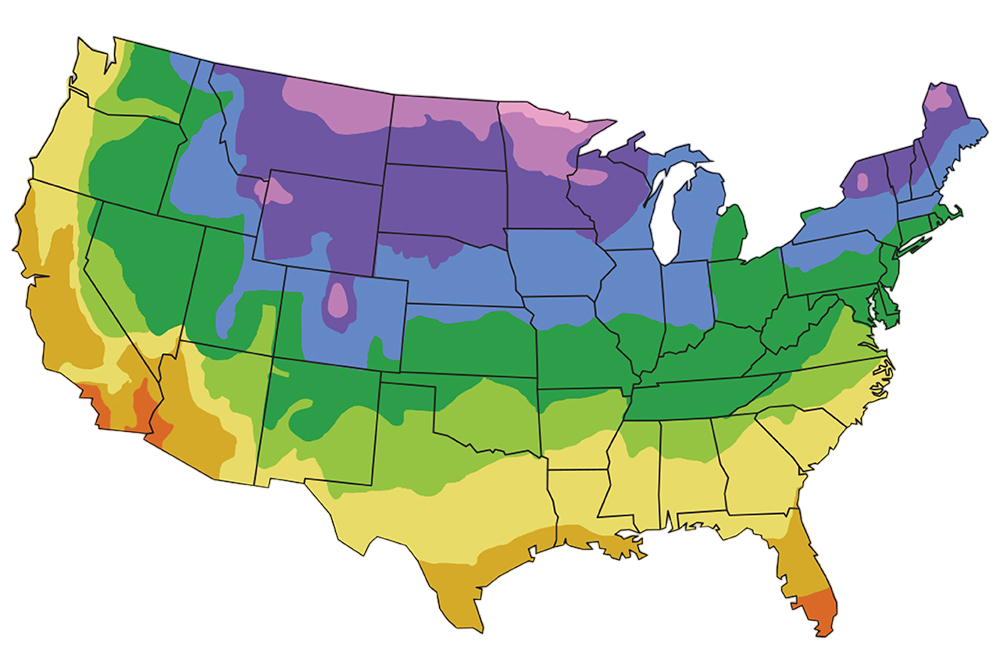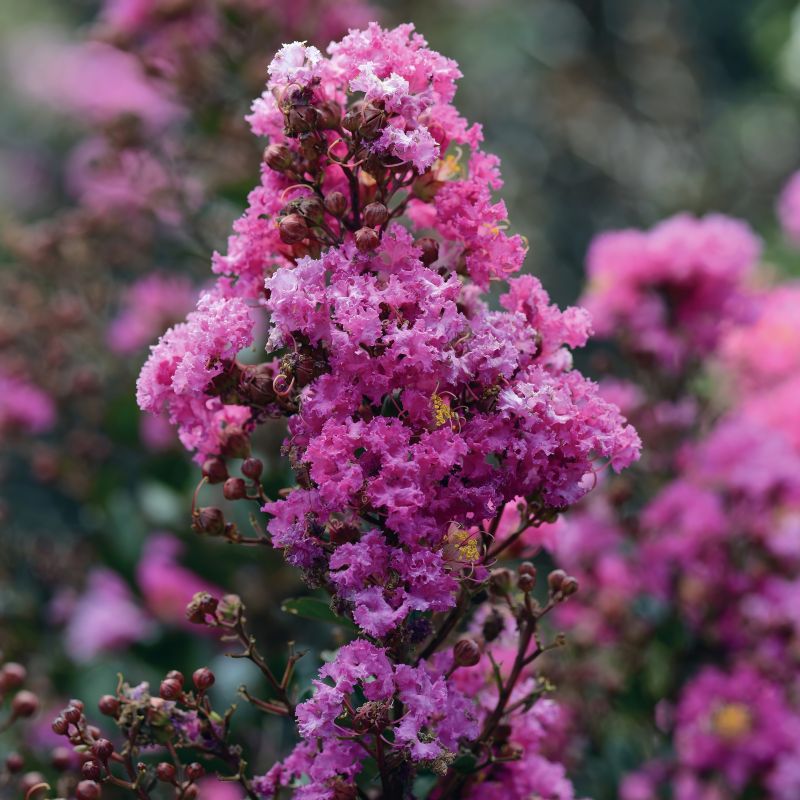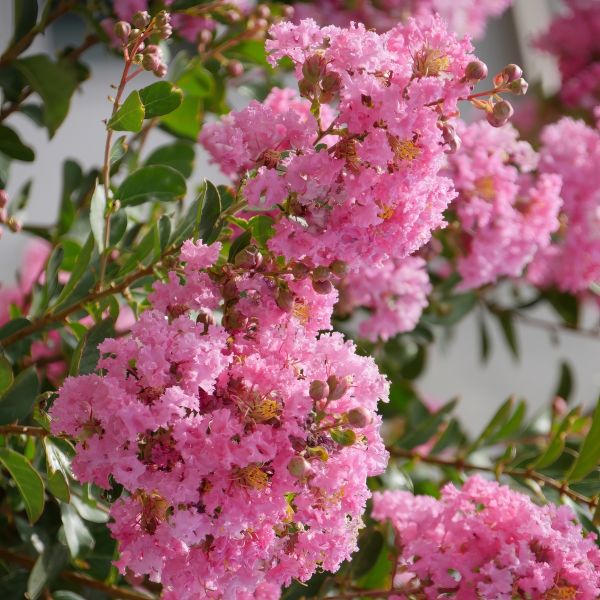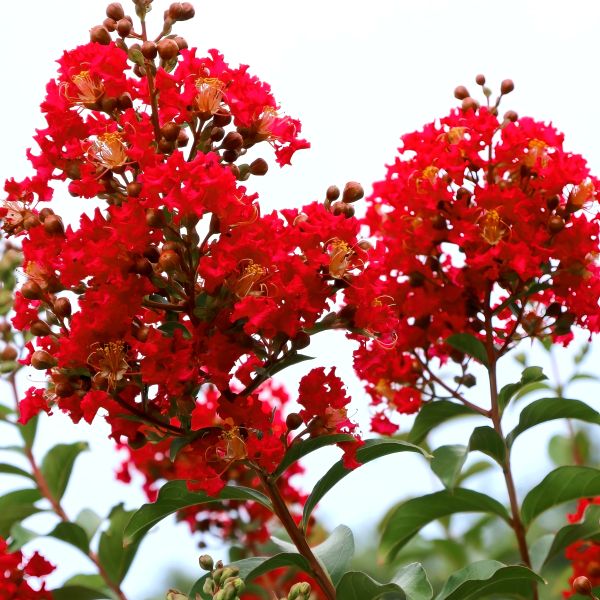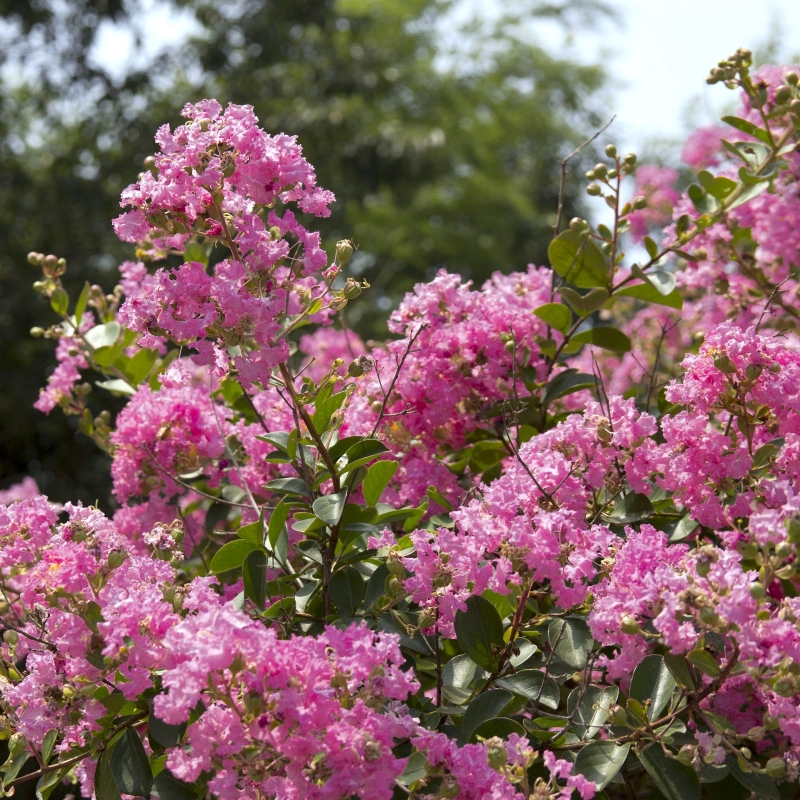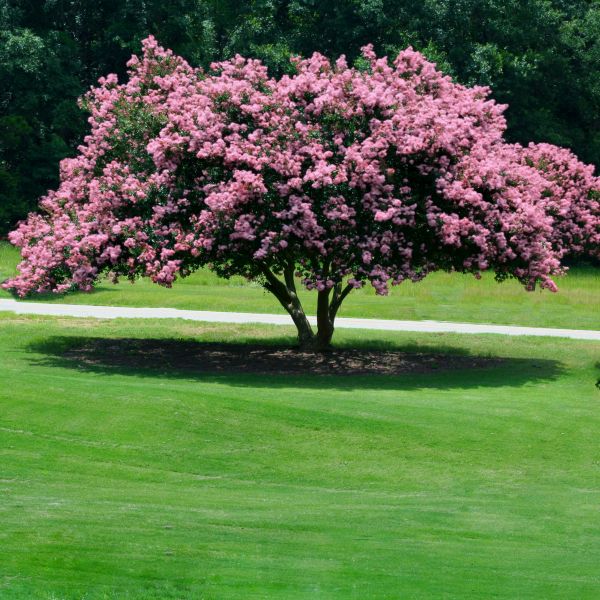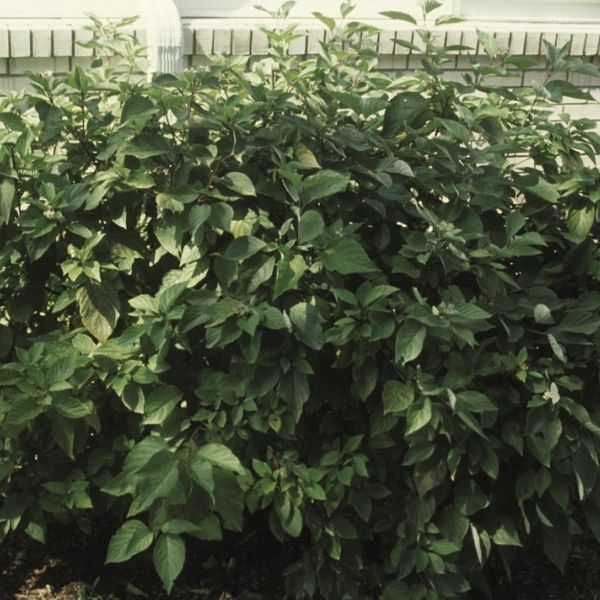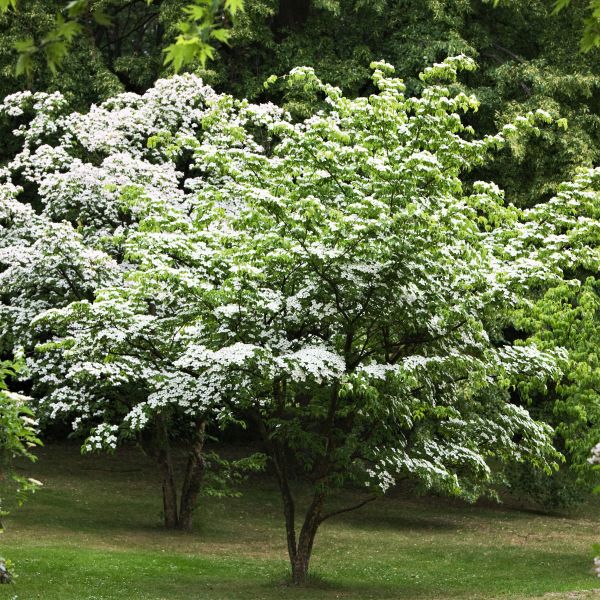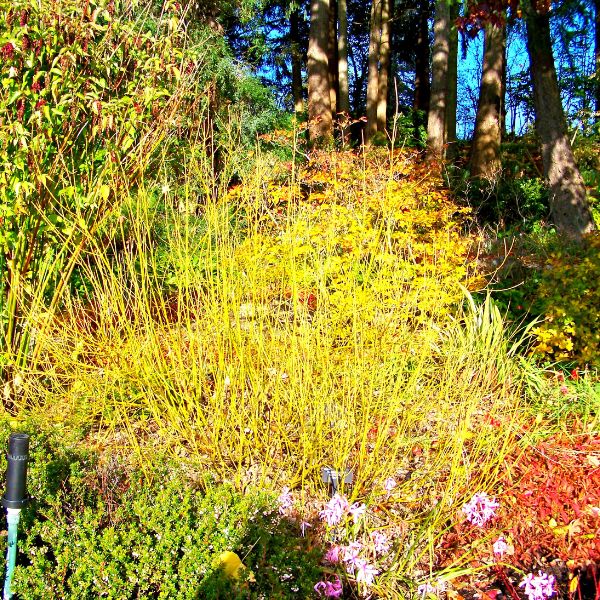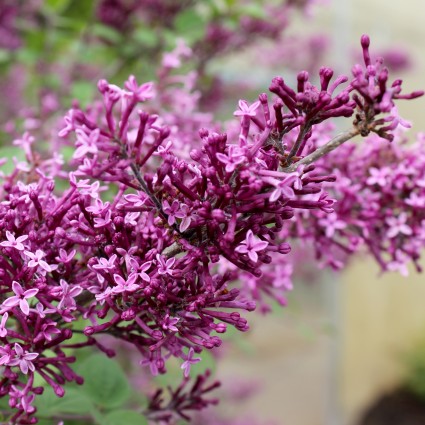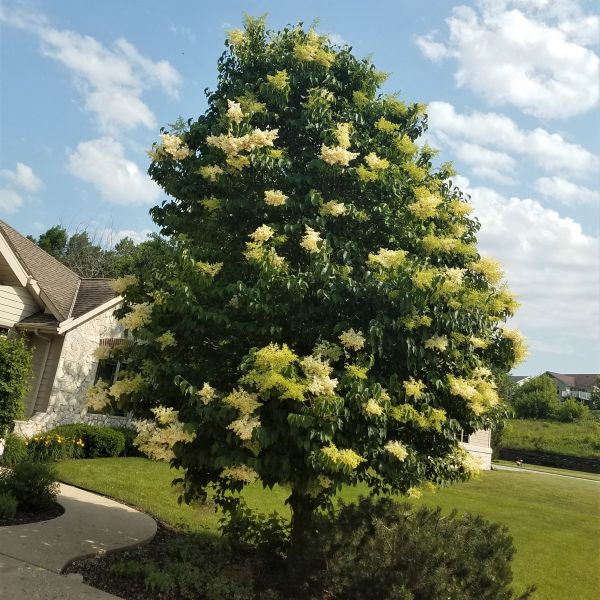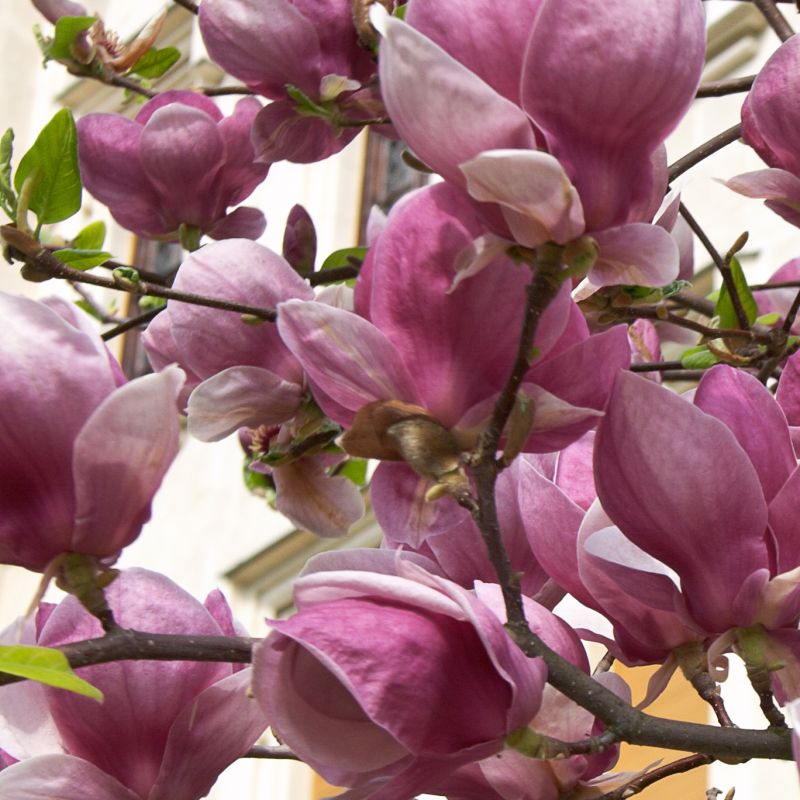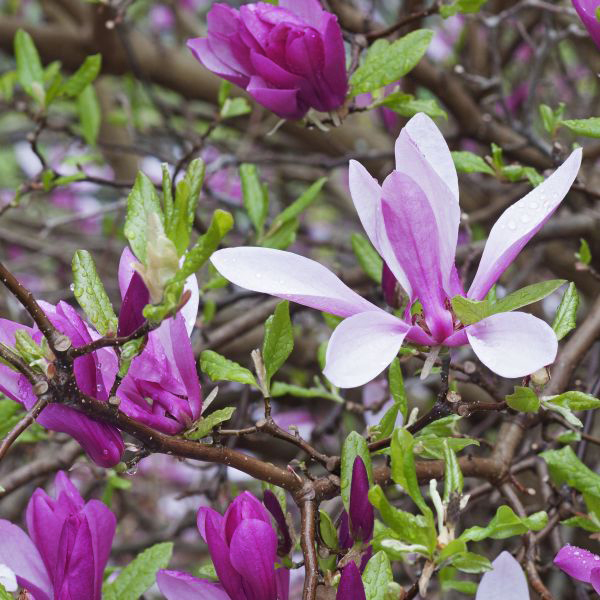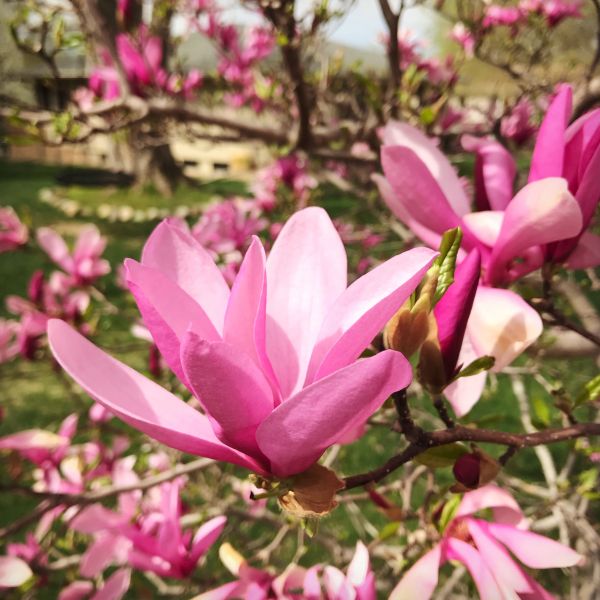
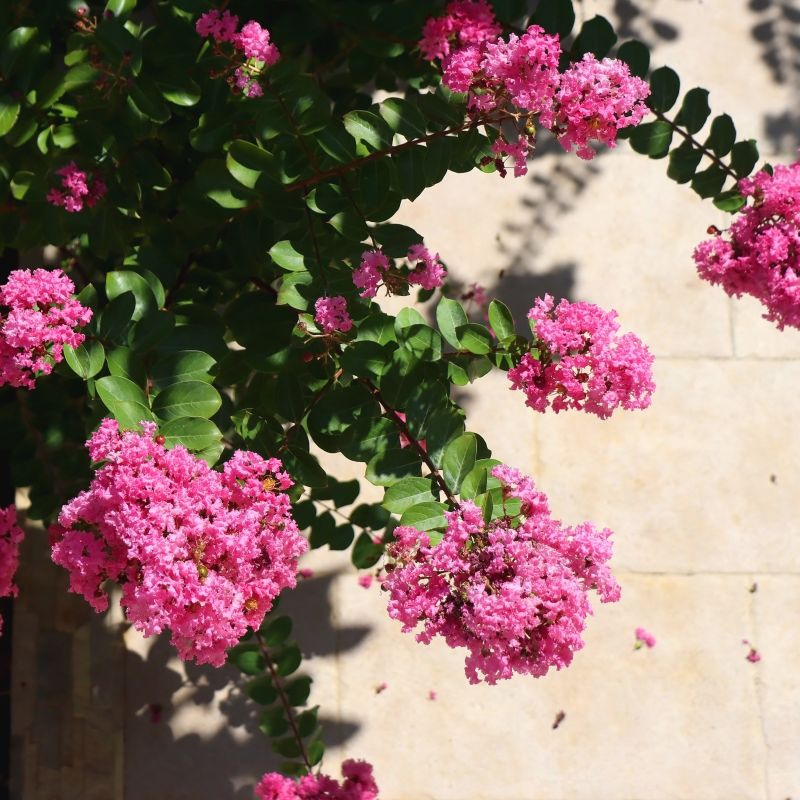
Tuscarora Crape Myrtle
Lagerstroemia x 'Tuscarora'
10 reviews
Tuscarora Crape Myrtle
Lagerstroemia x 'Tuscarora'
10 reviews
- Beautiful pink flowers that bloom all summer long
- Tolerant of heat and drought conditions
- Attracts butterflies and hummingbirds to your garden
- Recommended by landscape designers for optimal fit in real yards
$161.00
$231.00
30% Off
- Ships to 43215 in 3 to 7 days
- Free Shipping
- Plant Arrival Guarantee
- In Stock
- Free Plant Consult
$200 - Landscape-Approved: Every Plant We Sell Comes With Design Expertise Behind It
3.5 Gallon Multi-Stem
Not just beautiful - intentionally selected by ShrubHub's 3D landscape design team to fit real-world spaces and maximize yard potential.
Why Tuscarora Crape Myrtle?
Tuscarora Crape Myrtle is a popular choice for its stunning coral-pink blooms that last all summer long, adding a vibrant pop of color to any landscape. This deciduous shrub also boasts attractive peeling bark and a compact, upright habit that makes it perfect for small gardens or as a focal point. Drought tolerant and low maintenance, making it an excellent choice for any garden.
People who loved this plant also bought
Sunlight
Tuscarora Crape Myrtle thrives in full sun to partial shade, requiring at least 6-8 hours of direct sunlight daily to bloom and grow successfully. It is important to provide adequate sunlight for optimal growth and vibrant flower production.
Watering
Tuscarora Crape Myrtle trees require regular watering, especially during hot and dry periods. It is recommended to water deeply and consistently, allowing the soil to dry out slightly in between waterings. Mulching around the base of the tree can help reta
Fertilizing
Tuscarora Crape Myrtle thrives in well-drained soil with a pH level between 5.0 and 6.5. It benefits from a balanced fertilizer application in early spring and again in mid-summer. Use a slow-release granular fertilizer with equal parts nitrogen, phosphoru
Tuscarora Crape Myrtle
The Tuscarora Crape Myrtle, scientifically known as Lagerstroemia x 'Tuscarora', is a stunning deciduous shrub that is prized for its beautiful pink flowers and attractive bark. This variety is a hybrid crape myrtle that was developed for its hardiness and disease resistance.
The Tuscarora Crape Myrtle produces vibrant pink blooms in large clusters during the summer months, attracting pollinators such as bees and butterflies to your garden. The flowers give way to small, capsule-shaped fruits that add visual interest to the plant.
This crape myrtle is also known for its striking peeling bark, which provides year-round interest in the garden. The bark showcases shades of brown, gray, and cinnamon, adding texture and depth to the plant's appearance.
With a mature height of 15-20 feet and a spread of 10-15 feet, the Tuscarora Crape Myrtle is well-suited for use as a specimen plant, hedge, or border. It thrives in full sun and well-drained soil, requiring minimal maintenance once established.
Add a touch of elegance and color to your landscape with the beautiful Tuscarora Crape Myrtle.
Plant Information:
| Botanical Name: | Lagerstroemia x 'Tuscarora' |
| USDA Zones: | 7 - 9 |
| Water: | Moderate to Low |
| Exposure: | Full Sun |
| Soil Needs: | Well Drained |
| Mature Height: | 12 - 15 feet |
| Mature Spread: | 12 - 15 feet |
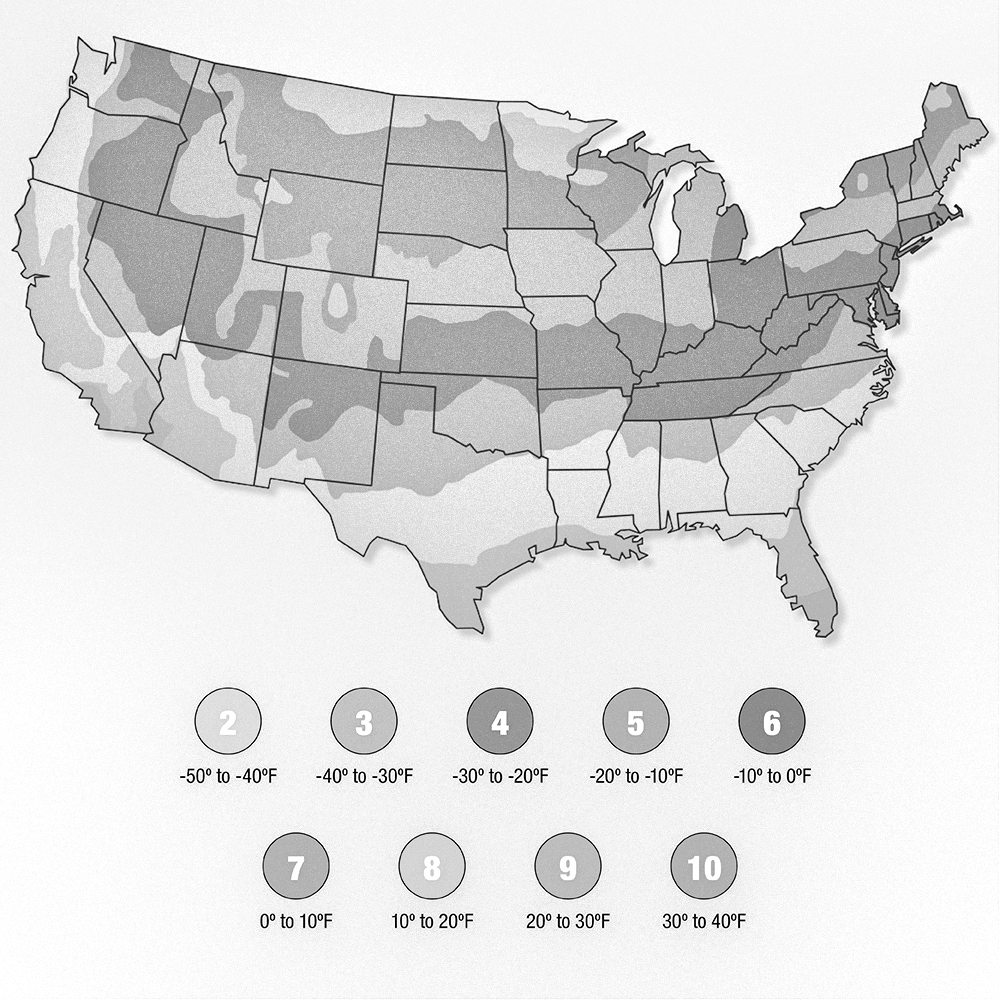

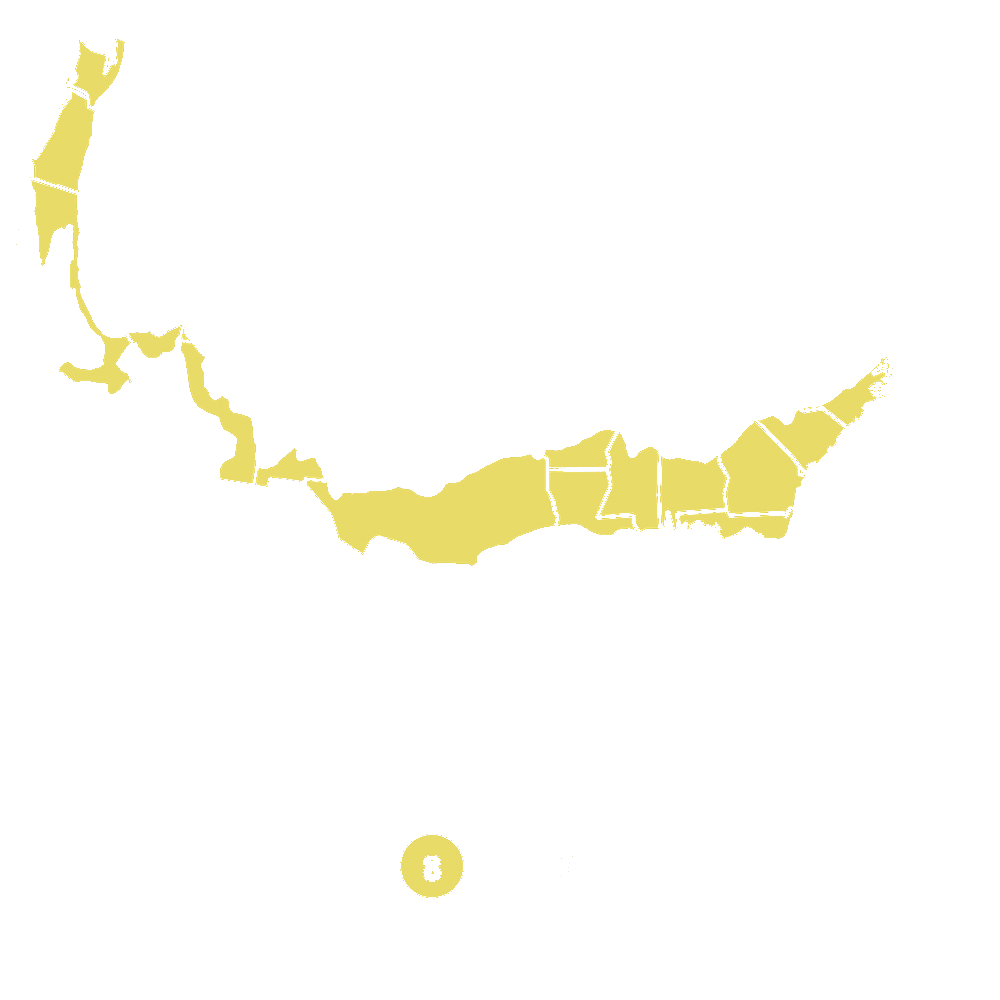
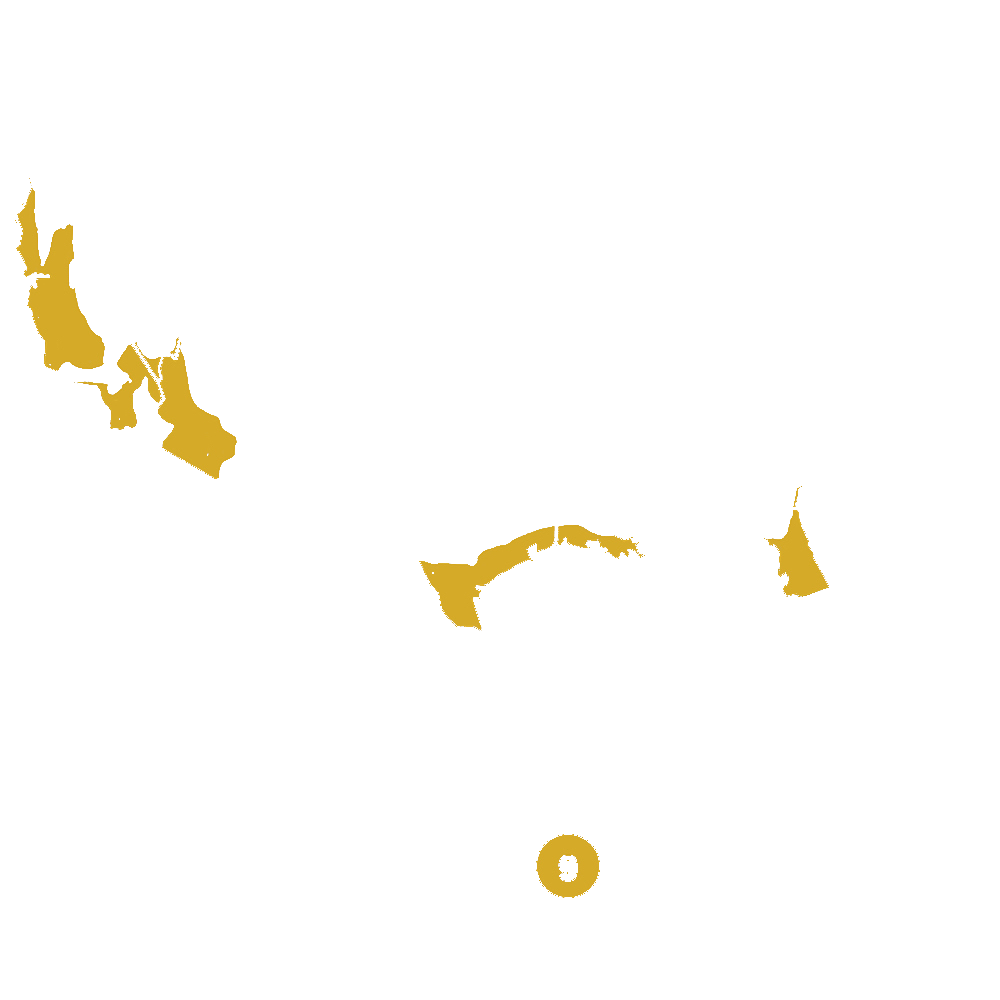
Pollination Info
Pollination Information for Tuscarora Crape Myrtle
Tuscarora Crape Myrtle (Lagerstroemia x 'Tuscarora') is a hybrid crape myrtle tree that produces vibrant pink flowers in the summer months. To ensure successful pollination and healthy growth of the tree, it is important to understand its pollination requirements.
Pollination Type:
Tuscarora Crape Myrtle is a deciduous tree that is primarily pollinated by bees and other pollinators attracted to its colorful flowers.
Pollination Season:
The flowering season for Tuscarora Crape Myrtle typically occurs in the summer months, during which the tree produces large clusters of pink flowers.
Pollination Requirements:
As a self-fertile tree, Tuscarora Crape Myrtle is capable of producing seed on its own without the need for a separate pollinator. However, having multiple trees in close proximity can increase the chances of successful pollination and fruit set.
Pollination Tips:
- Plant Tuscarora Crape Myrtle in well-drained soil and full sun to encourage healthy growth and abundant flowering.
- Provide ample water during the growing season to support the tree's overall health and flowering capabilities.
- Consider planting other pollinator-friendly plants in the surrounding area to attract bees and other beneficial insects that can aid in pollination.
FAQ
Tuscarora Crape Myrtle (Lagerstroemia x 'Tuscarora') FAQ
Q: What is the mature size of a Tuscarora Crape Myrtle?
A: Tuscarora Crape Myrtles typically grow to be around 15-20 feet tall and 10-15 feet wide.
Q: What kind of sunlight does a Tuscarora Crape Myrtle need?
A: Tuscarora Crape Myrtles thrive in full sun, meaning they need at least 6 hours of direct sunlight per day.
Q: How often should I water my Tuscarora Crape Myrtle?
A: During the first year after planting, water your Tuscarora Crape Myrtle regularly to help establish its root system. Once established, they are drought tolerant and only need to be watered during long periods of dry weather.
Q: When should I prune my Tuscarora Crape Myrtle?
A: Prune your Tuscarora Crape Myrtle in late winter or early spring before new growth begins. Remove any dead or damaged branches and shape the tree as desired.
Q: Does the Tuscarora Crape Myrtle attract wildlife?
A: Yes, Tuscarora Crape Myrtles are known to attract butterflies and hummingbirds with their vibrant flowers.
Q: How often should I fertilize my Tuscarora Crape Myrtle?
A: Fertilize your Tuscarora Crape Myrtle in the spring with a slow-release fertilizer designed for flowering trees and shrubs. Avoid fertilizing in late summer or fall as this can stimulate new growth that may be damaged by winter frost.
Planting & Care
Planting & Care for Tuscarora Crape Myrtle
Planting:
- Choose a location with full sun and well-drained soil.
- Dig a hole twice as wide and just as deep as the root ball.
- Place the plant in the hole, making sure the top of the root ball is level with the surrounding soil.
- Backfill the hole with soil, tamping it down gently as you go.
- Water thoroughly after planting.
Care:
- Water regularly, especially during periods of drought.
- Apply a balanced fertilizer in the spring before new growth appears.
- Prune in late winter or early spring to remove dead or damaged branches and shape the plant.
- Monitor for pests and diseases, such as powdery mildew or aphids, and treat as needed.
- Mulch around the base of the plant to help retain moisture and suppress weed growth.
Check Out These Verified Customer Reviews:
Customer Reviews
4.7 out of 5 based on 10 reviews
Thank you! Your review has been submitted.
Healthy plant, easy to navigate website
Excellent customer service, fast shipping
Absolutely love the vibrant pink flowers on this Tuscarora Crape Myrtle!
Item has been added to your cart.

